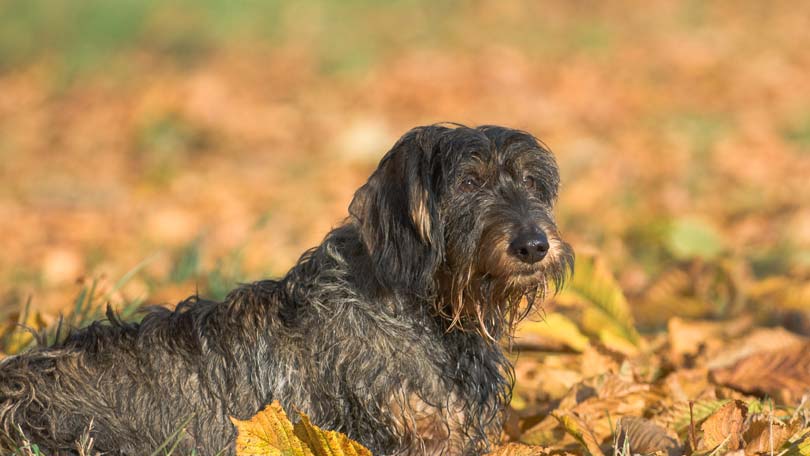
A dog and a bone seems as natural a combination as peanut butter and jelly. If you don’t believe it, you can show a bone to just about any dog and the longing in his eyes will display exactly how much he wants to spend a little one on one time with the bone.
But are bones good for dogs? What about chews, such as rawhide, which can serve as somewhat of a substitute for bones for dogs whose owners are uneasy giving them bones? Do the health benefits outweigh the potential risks? This article will explore the benefits and risks associated with feeding your dog bones and other chew items that can serve as alternatives.
Bones
It’s important to note that experts do not agree on whether pet owners should feed bones to their dogs. Some cite the nutritional value as reason enough to include an occasional bone in their pet’s diet. Others say that the benefits do not outweigh the risk, and that the serious injury that is possible due to eating bones should be enough reason to abstain from feeding bones to their dogs.
In the end, each pet owner must decide whether or not they will give bones to their dogs. A bit of research will help pet owners feel that they are making the best decision for their pet.
In spite of the fact that some say that bones are a great source of nutrition, the truth is that bones contain no vitamins at all. In fact, the only useful elements found in bone are calcium and phosphorus. Both are important to the overall health of dogs, but are easily found in other foods.
There is no research that proves that bones are essential to the health of a dog. Where health benefits may be found are in the meat and tissue that may still be present on the bone when the dog consumes it.
Even though pet owners may have heard that bones are a good source of nutrition, the truth is that there is little nutritional value to be found in bone. Some go so far as to say that a dog cannot be at his healthiest without bones. But vets who have been practicing for years see many dogs that live to a ripe old age that have never had one single bone.
Of course there is the fact that dogs in the wild eat bones, and some cite that as proof that it must be healthy or needful. But even if dogs in the wild need bones (and there is no evidence for this) is that proof that bones are the healthiest choice for domesticated dogs for which other options are readily available? Sure, if you gave your dog a choice between a bone or a bowl of his healthy kibble there’s a darn good chance he’d go for the bone. Then again, if you gave him a choice between that kibble or something from the cat’s litter box he’d probably go for the litter box snack. The point is that you can’t always trust the instinct of your pet to make the healthiest choices regarding his diet.
Many experts agree that the potential problems associated with eating bones make them a poor choice as a treat for your dog.
Some dogs, although admittedly a minority, are allergic to the marrow in the bone and will become violently ill within hours after eating it. But that is not the greatest danger. As bones break, they splinter. Usually those splinters will be passed through the stool. But there is a chance that the splinter will instead become lodged in the intestines or remain in the stomach. Also, if the dog ingests a larger chunk of bone, that, too, can become lodge in the stomach or liver.
The health problems that result are very serious and, at best, mean a stay in the hospital and big vet bills. At worst, the dog can die from the injuries.
Also, the dog’s teeth can crack from chewing on hard bones. When this happens, there is the potential for serious infection.
One solution for those who are totally sold on the health benefits of bone is to use ground bones. In fact, some commercial dog foods include ground bone in the recipe. This way your dog will get whatever nutritional value is present in bone without any of the risks.
Alternatives to Feeding Dog Bones
Of course, much of the appeal of bones is that dogs enjoy chewing on them. If you’d like to replace that aspect of bones for your pooch, there are many options available.
Rawhide
Rawhide, which is made from the skin of a cow, is probably the most common chew thing for dogs, but it is not without its own risks. If the dog swallows a chunk of rawhide it will likely digest in time and not require surgical intervention, but it can make your dog very uncomfortable. When the rawhide is small enough for the dog to swallow, it should be taken away.
Pig Ears
Pig ears are very high in fat, so they are not the best choice for a dog who is struggling with being overweight. Also, because of their high fat content, pig ears should only be given as an occasional treat.
Pizzle Sticks
These chew treats are lower in fat than pig ears, and are a better choice for overweight dogs.
There are other animal products, such as lamb lung and pig tails, available for your dog’s chewing pleasure. No matter what you give you dog for chewing, whether it is a bone or an alternative, you should always be present while your dog enjoys his treat so you can be sure he doesn’t choke on a large piece that he tried to swallow.
Whether or not you choose to give your dog bones, remember to weigh the risks against the benefits when making your decision.
